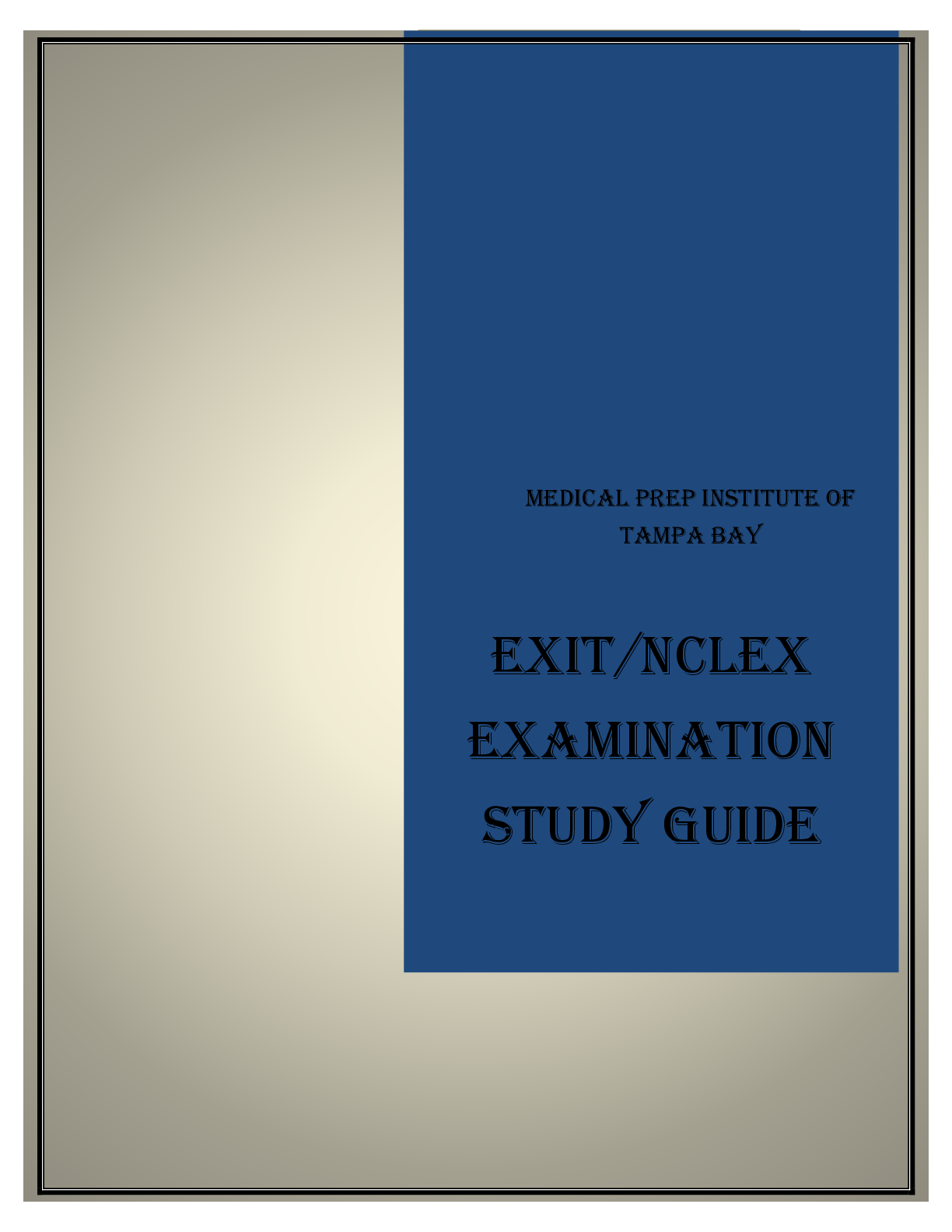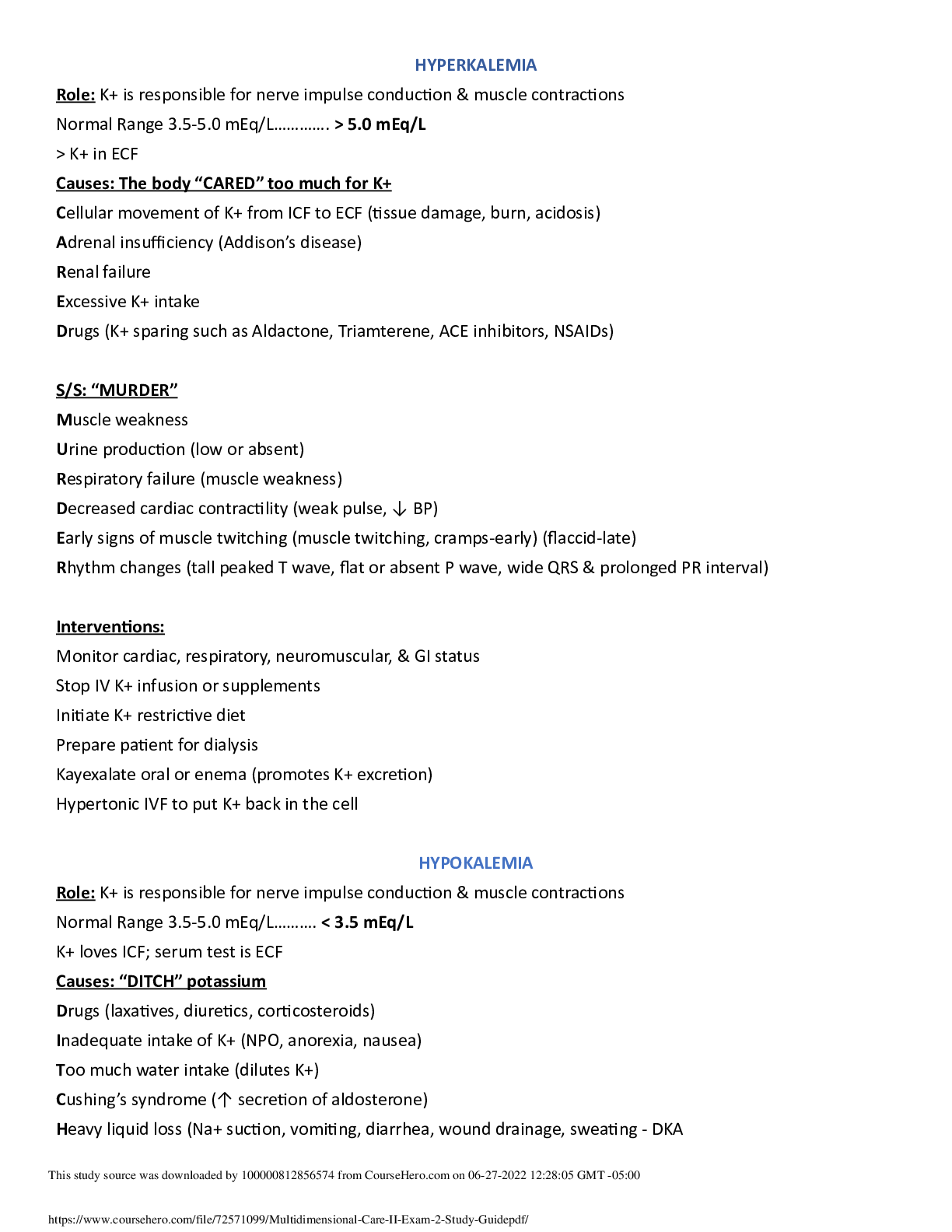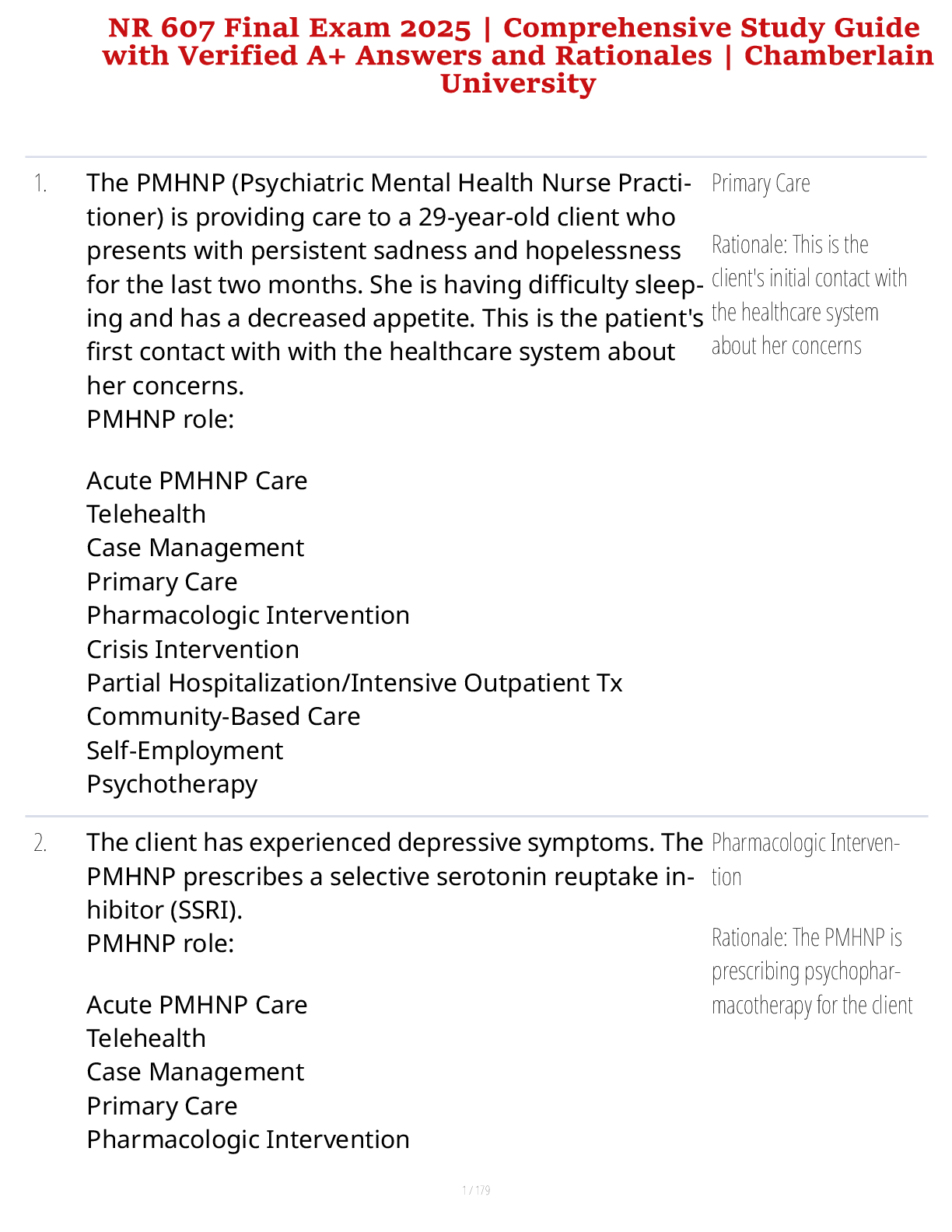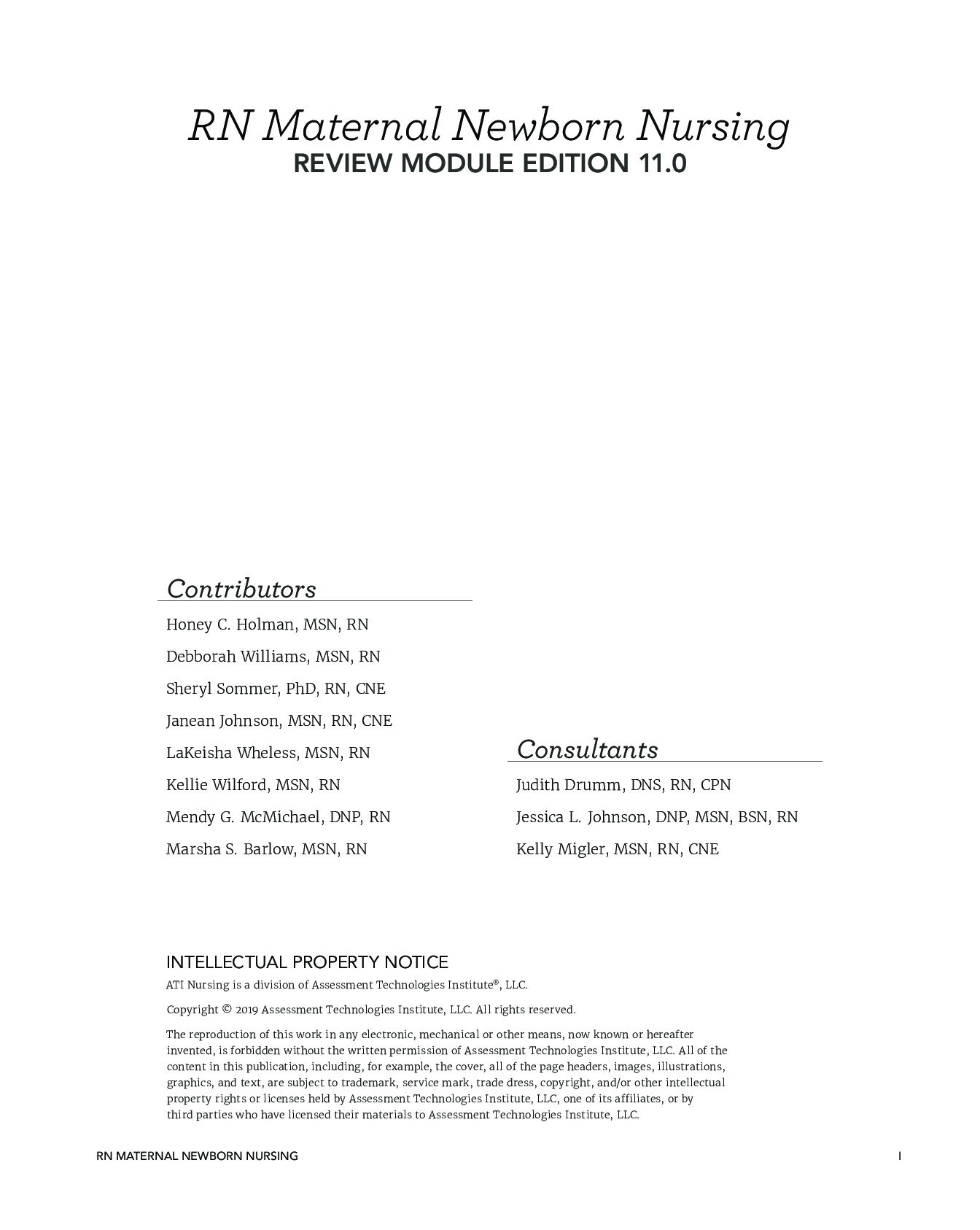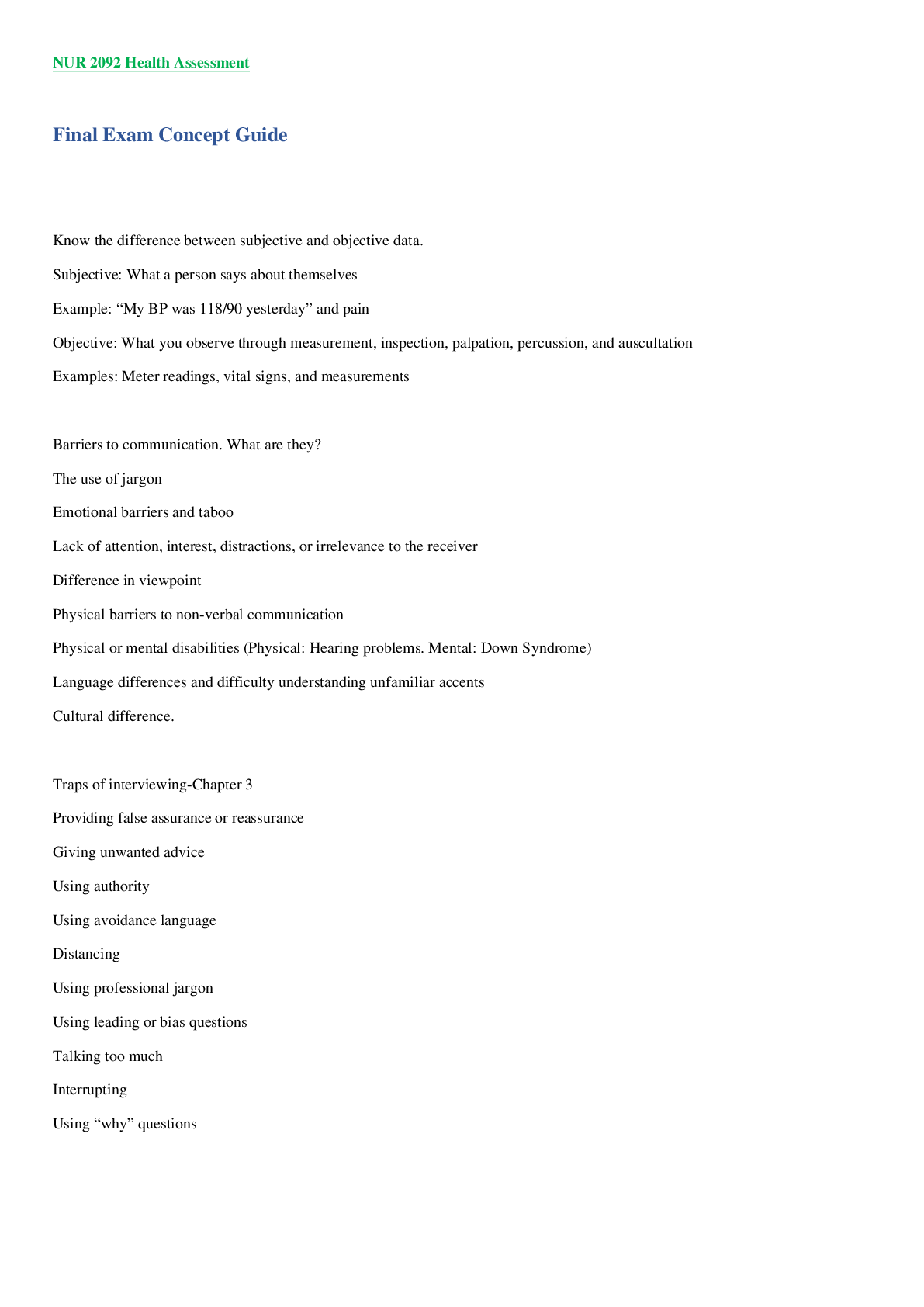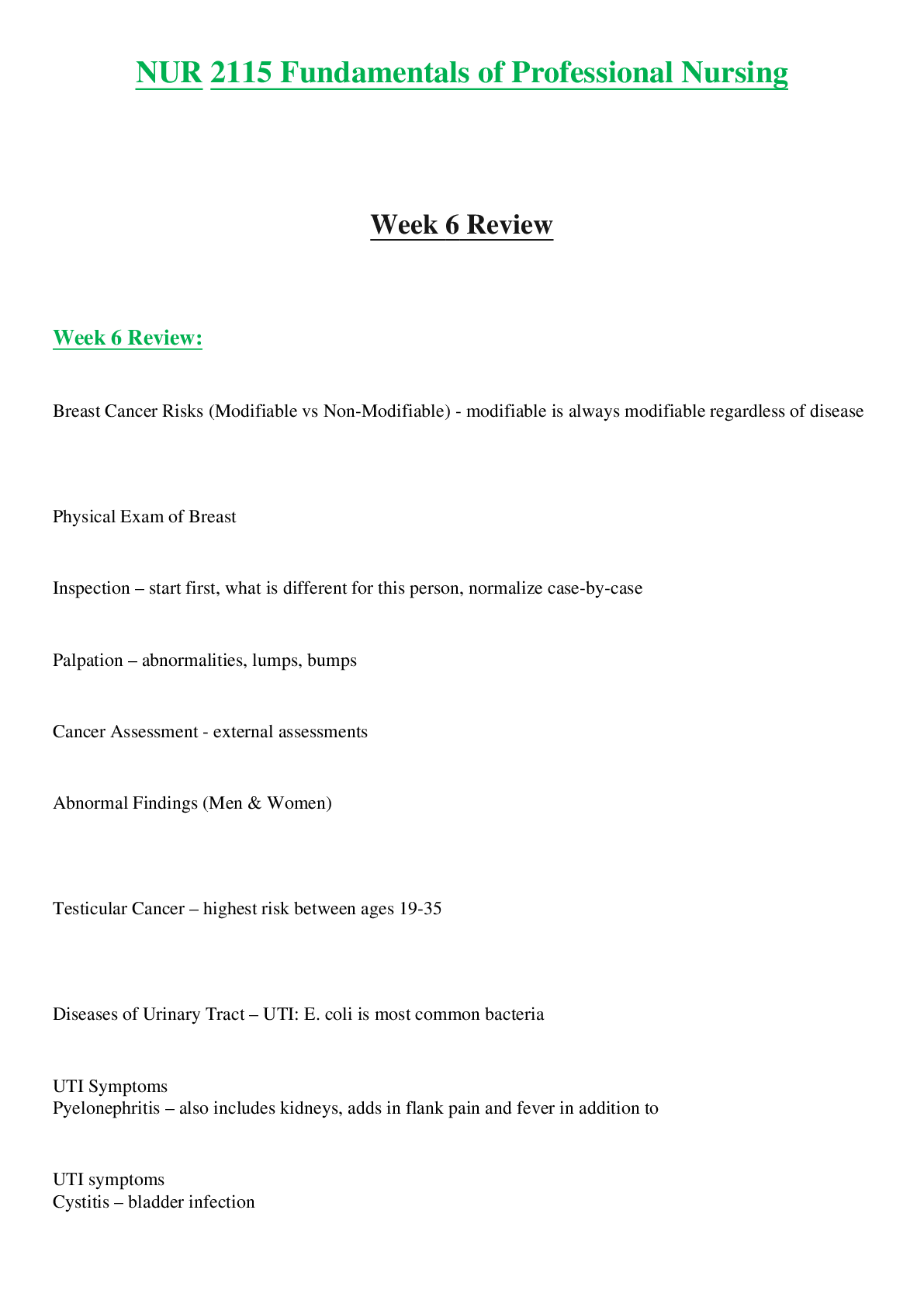Accounting > STUDY GUIDE > University of Texas, Permian Basin ACCOUNTING 3303 Ch. 11 PROBLEMS WITH VERIFIED SOLUTIONS (All)
University of Texas, Permian Basin ACCOUNTING 3303 Ch. 11 PROBLEMS WITH VERIFIED SOLUTIONS
Document Content and Description Below
11-24 Special order, activity-based costing. (CMA, adapted) The Reward One Company manufactures windows. Its manufacturing plant has the capacity to produce 12,000 windows each month. Current product ... ion and sales are 10,000 windows per month. The company normally charges $250 per window. Cost information for the current activity level is as follows: Reward One has just received a special one-time-only order for 2,000 windows at $225 per window. Accepting the special order would not affect the company’s regular business or its fixed costs. Reward One makes windows for its existing customers in batch sizes of 100 windows (100 batches 100 windows per batch = 10,000 windows). The special order requires Reward One to make the windows in 25 batches of 80 windows. Required: 1. Should Reward One accept this special order? Show your calculations. 2. Suppose plant capacity were only 11,000 windows instead of 12,000 windows each month. The special order must either be taken in full or be rejected completely. Should Reward One accept the special order? Show your calculations. 3. As in requirement 1, assume that monthly capacity is 12,000 windows. Reward One is concerned that if it accepts the special order, its existing customers will immediately demand a price discount of $20 in the month in which the special order is being filled. They would argue that Reward One’s capacity costs are now being spread over more units and that existing customers should get the benefit of these lower costs. Should Reward One accept the special order under these conditions? Show your calculations. SOLUTION (30 min.) Special order, activity-based costing. 1. Direct materials cost per unit ($600,000 10,000 units) = $60 per unit Direct manufacturing labor cost per unit ($700,000 10,000 units) = $70 per unit Variable cost per batch = $1,500 per batch Reward One’s operating income under the alternatives of accepting/rejecting the special order are: Without OneTime Only Special Order 10,000 Units With OneTime Only Special Order 12,000 Units Difference 2,000 Units Revenues $2,500,000 $2,950,000 $450,000 Variable costs: Direct materials 600,000 720,0001 120,000 Direct manufacturing labor 700,000 840,0002 140,000 Batch manufacturing costs 150,000 187,5003 37,500Fixed costs: Fixed manufacturing costs 250,000 250,000 –– Fixed marketing costs 400,000 400,000 –– Total costs 2,100,000 2,397,500 297,500 Operating income $ 400,000 $ 552,500 $152,500 1$600,000 + ($60 2,000 units) 2$700,000 + ($70 2,000 units) 3$150,000 + ($1,500 25 batches) Alternatively, we could calculate the incremental revenue and the incremental costs of the additional 2,000 units as follows: Incremental revenue $225 2,000 $450,000 Incremental direct manufacturing costs $ 60 2,000 units 120,000 Incremental direct manufacturing costs $ 70 2,000 units 140,000 Incremental batch manufacturing costs $1,500 25 batches 37,500 Total incremental costs 297,500 Total incremental operating income from accepting the special order $152,500 Reward One should accept the one-time-only special order if it has no long-term implications because accepting the order increases Reward One’s operating income by $152,500. If, however, accepting the special order would cause the regular customers to be dissatisfied or to demand lower prices, then Reward One will have to trade off the $152,500 gain from accepting the special order against the operating income it might lose from regular customers. 2. Reward One has a capacity of 11,000 windows. Therefore, if it accepts the special one-time order of 2,000 windows, it can sell only 9,000 windows instead of the 10,000 windows that it currently sells to existing customers. That is, by accepting the special order, Reward One must forgo sales of 1,000 windows to its regular customers. Alternatively, Reward One can reject the special order and continue to sell 10,000 windows to its regular customers. Reward One’ operating income from selling 9,000 windows to regular customers and 2,000 windows under one-time special order follow: Revenues (9,000 $250) + (2,000 $225) $2,700,000 Direct materials (9,000 $60) + (2,000 $60) 660,000 Direct manufacturing labor (9,000 $70) + (2,000 $70) 770,000 Batch manufacturing costs (901 $1,500) + (25 $1,500) 172,500 Fixed manufacturing costs 250,000 Fixed marketing costs 400,000 Total costs 2,252,500 Operating income $ 447,500 1Reward One makes regular windows in batch sizes of 100. To produce 9,000 windows requires 90 (9,000 ÷ 100) batches. Accepting the special order will result in an increase in operating income of $47,500 ($447,500 – $400,000). The special order should, therefore, be accepted. A more direct approach would be to focus on the incremental effects––the benefits of accepting the special order of 2,000 units versus the costs of selling 1,000 fewer units to regular customers. Increase in operating income from the 2,000-unit special order equals $152,500 (requirement 1). The loss in operating income from selling 1,000 fewer units to regular customers equals: Lost revenue, $250 1,000 $(250,000)Savings in direct materials costs, $60 1,000 60,000 Savings in direct manufacturing labor costs, $70 1,000 70,000 Savings in batch manufacturing costs, $1,500 10 15,000 Operating income lost $(105,000) Accepting the special order will result in an increase in operating income of $47,500 ($152,500 – $105,000). The special order should, therefore, be accepted. Reward One should consider the effect on its regular customers of accepting the special order. For example, would selling 1,000 fewer windows to its regular customers cause these customers to find new suppliers that might adversely impact Reward One’s business in the long run. 3. Reward One should not accept the special order. Increase in operating income by selling 2,000 units under the special order (requirement 1) $ 152,500 Operating income lost from existing customers ($20 10,000) (200,000) Net effect on operating income of accepting special order $ (47,500) The special order should, therefore, be rejected. 11-25 Make versus buy, activity-based costing. The Svenson Corporation manufactures cellular modems. It manufactures its own cellular modem circuit boards (CMCB), an important part of the cellular modem. It reports the following cost information about the costs of making CMCBs in 2017 and the expected costs in 2018: [Show More]
Last updated: 3 years ago
Preview 1 out of 11 pages

Buy this document to get the full access instantly
Instant Download Access after purchase
Buy NowInstant download
We Accept:

Reviews( 0 )
$13.00
Can't find what you want? Try our AI powered Search
Document information
Connected school, study & course
About the document
Uploaded On
Jun 21, 2021
Number of pages
11
Written in
All
Additional information
This document has been written for:
Uploaded
Jun 21, 2021
Downloads
0
Views
90





